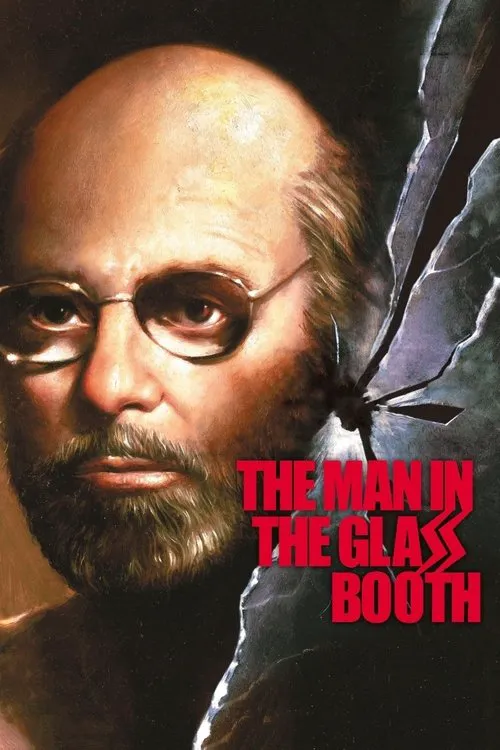The Man in the Glass Booth

Plot
Arthur Goldman, a self-proclaimed "king" of the Manhattan high-rise, lived an opulent life as a Jewish industrialist. He flaunted his wealth, flaunting expensive suits, and boasting about his exquisite tastes in art. His assistant, Charlie, often found himself bewildered by Goldman's bold assertions and off-color comments about Jewish life. Despite his questionable remarks, Charlie could not deny the undeniable charm of the man, who often treated him to expensive afternoons of fine dining and champagne. However, the life of opulence and luxury came crashing down one day when, without warning, Israeli secret agents stormed into Goldman's high-rise, arresting him for a crime he vehemently denied: being a Nazi war criminal. Initially taken aback by the sudden turn of events, Goldman soon regained his composure and began to weave a complex web of arguments and counterarguments in an attempt to clear his name. Charlie watched in horror as Goldman, once a carefree man-about-town, transformed into a determined, even ruthless, advocate for his own innocence. As Goldman was whisked away to Israel to face trial, he began to meticulously study his case, scouring documents and records for any shred of evidence that might support his claim of innocence. He soon realized that his accusers' cases, built largely on hearsay and circumstantial evidence, were woefully inadequate. With cunning and intellectual prowess, Goldman launched a scathing counterattack against his accusers, forcing them to confront the very doubts they had previously refused to acknowledge. Goldman seized on every opportunity to expose the frailties in his accusers' arguments, cleverly manipulating the trial to his advantage. The once-skeptical judges and jurors found themselves drawn into the whirlwind of Goldman's logic, and soon they too began to harbor serious doubts about the veracity of the evidence against him. The crux of the case centered on Goldman's alleged role in the notorious Treblinka extermination camp, where thousands of innocent lives were lost. Goldman's accusers had built their case largely on hearsay and circumstantial evidence, including a suspicious-looking passport photo and a series of cryptic letters supposedly penned by Goldman himself. However, Goldman deftly exposed the frailties in these pieces of evidence, pointing to inconsistencies and contradictions that undermined the case against him. As the trial reached its climax, Goldman's defense strategy began to pay off. Judges and jurors alike found themselves increasingly swayed by Goldman's arguments, which seemed to erode the case against him with each passing day. The tables had turned, and now it was the accusers who were on trial. Goldman's clever counterattacks had forced them to confront their own doubts and uncertainties, leading them to question the reliability of their own evidence. In a stunning reversal, Goldman was acquitted and released, his name cleared of the heinous crime that had been pinned to him. As he walked free, the once-confident judges and jurors looked on with a newfound sense of humility, their conviction in the original case having been shattered by Goldman's cunning and intellectual onslaught. Goldman's victory, however, was tempered by the knowledge that his case had exposed a deeper truth – one that spoke to the flaws and frailties that lay at the heart of the judicial system. By forcing his accusers to confront their own doubts and uncertainties, Goldman had unwittingly highlighted the fragility of justice in the face of uncertain evidence. As he departed the courtroom, his reputation once again intact, Goldman was left to ponder the broader implications of his case. Had he truly been acquitted, or had he merely exposed the fallibility of the very system he now had escaped? The question, like Goldman's past, remained shrouded in mystery.
Reviews
Recommendations



